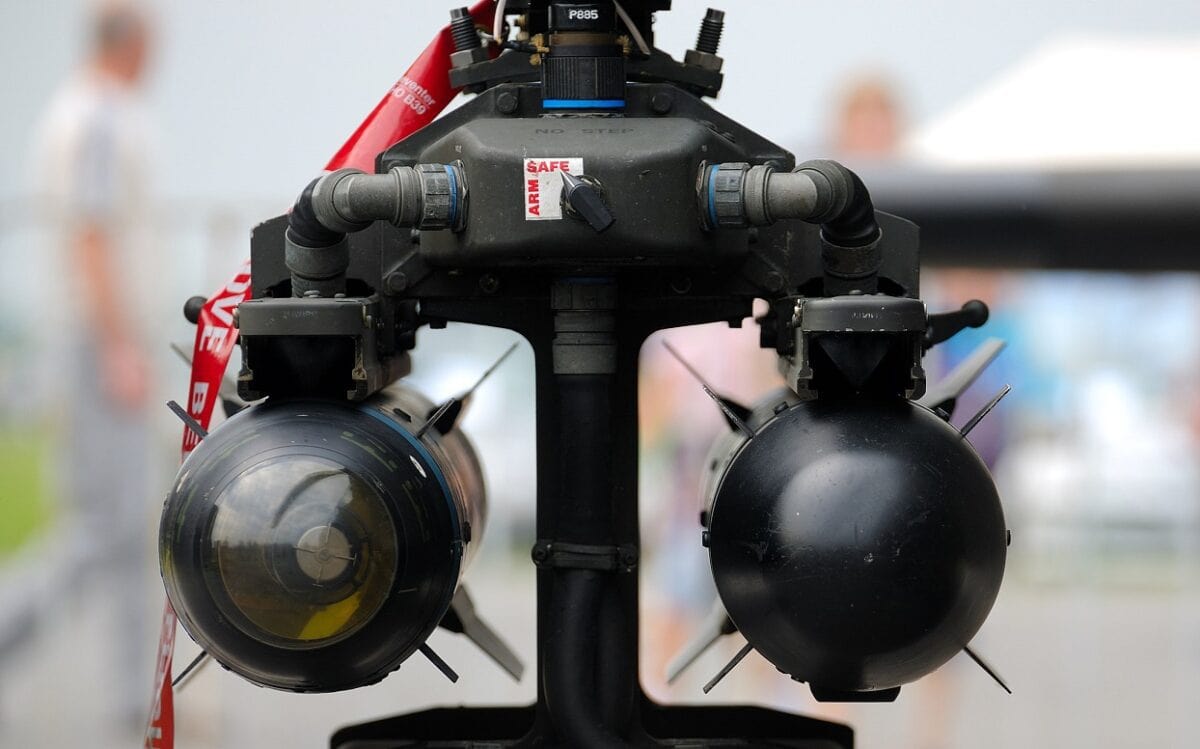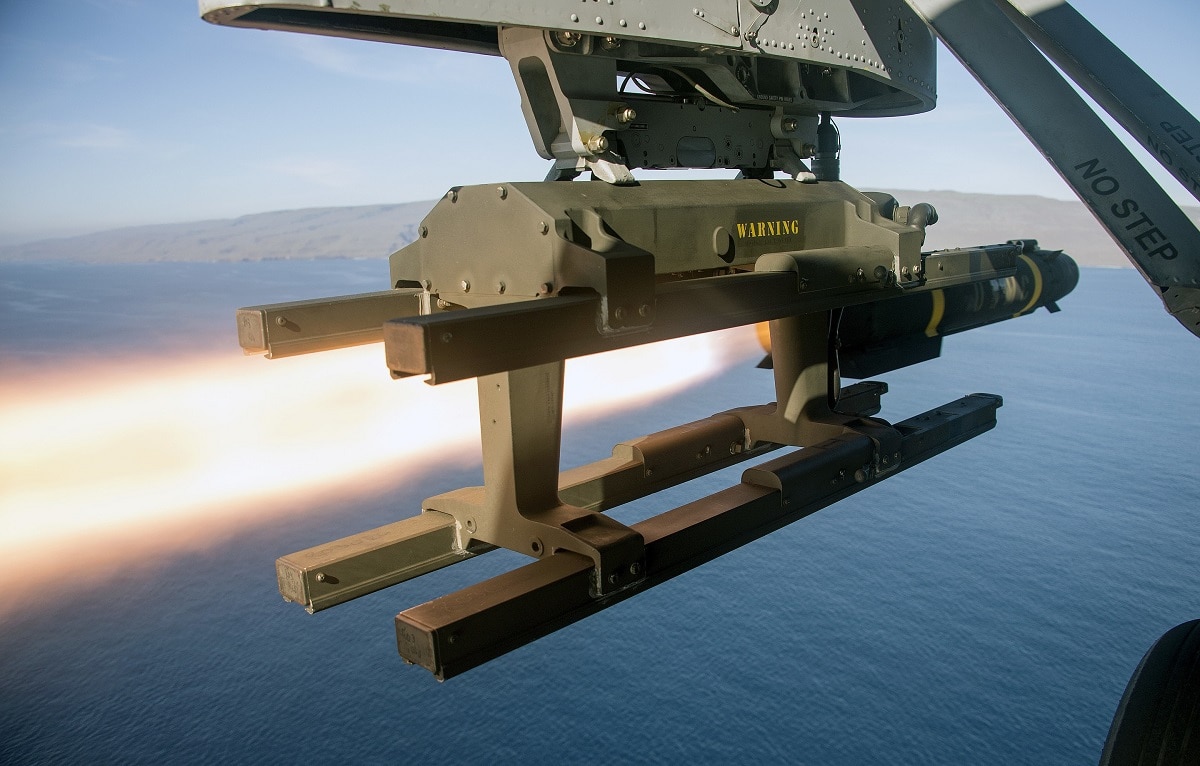The AGM-179 will replace the legendary Hellfire missile as full-rate production has been approved by the U.S. military. How well will it perform in an era of great power competition with Russia and China challenging U.S. military dominance?
After nearly four decades of service, the legendary Hellfire missile has a replacement on the way in Lockheed Martin’s AGM-179 Joint Air-to-Ground Missile (JAGM). On August 30, the U.S. Army approved the JAGM for full-rate production.
This new weapon system may look an awful lot like its predecessors, but the JAGM builds upon the Hellfire’s low-cost, high-accuracy legacy by mashing multiple targeting systems into a single weapon. This results in one missile that can do the job of both Hellfire missiles currently in American and allied inventories.
Living up to the legacy of the Hellfire
The AGM-114 Hellfire missile was born in the 1970s out of the pressing need for an effective anti-tank weapon for American rotorcraft like the new AH-64 Apache. In fact, the name Hellfire began as an abbreviation for the longer, “HELiborne, Laser, FIRE and Forget Missile.” The weapon soon proved so effective, however, that it was incorporated into a broader variety of platforms. Today’s modern iterations of the Hellfire serve aboard helicopters, fixed-wing aircraft, watercraft, and even land-based launchers in a surface-to-air capacity.
The incredible accuracy of these weapons has even led to the development of the AGM-114 R9X — a Hellfire missile that swaps its explosive warhead for a set of six deployable 18″ blades meant to take out high-value targets without killing any innocent bystanders. This weapon, however, has been used sparingly by intelligence and special operations agencies and doesn’t appear to have made its way into the conventional forces.
Today’s primary family of Hellfire missiles includes the AGM-114R Hellfire II, commonly known as the Hellfire Romeo, and the AGM-114L Longbow Hellfire. These two missiles share several elements, including warheads. Yet, they differ dramatically when it comes to targeting, forcing users to maintain separate inventories of each. The AGM-179 Joint Air-to-Ground Missile (JAGM) will replace both of these specialized weapons.
The Hellfire Romeo’s DNA is more closely tied to its predecessors, leveraging a highly-accurate Semi-Active Laser (SAL)-guidance system to deliver 20 pounds of explosives to targets more than six miles away. It serves as the primary air-to-surface weapon for a number of platforms like the Army’s AH-64 Apache, the Marine Corps’ AH-1W Super Cobra, and the Air Force’s long-loitering MQ-9 Reaper UAV.
The other Hellfire missile stocking today’s inventories is the AGM-114L Longbow, which swaps out the laser guidance system for a millimeter wave (MMW) radar apparatus that allows the missile to offer high-accuracy performance at beyond-line-of-sight ranges or in environments that can compromise the efficacy of laser guidance (think bad weather or heavy smoke). While the Hellfire Romeo tends to be the general-purpose air-to-surface missile in Army and Marine inventories, the Longbow is the principal anti-tank weapon system for the world-renown tank-hunter Apache. However, despite its proven efficacy, the Longbow missile went out of production in 2005.
The AGM-179 JAGM pulls double duty to see through enemy defenses
Unlike the Hellfire Romeo and Longbow missiles, the AGM-179 JAGM carries a dual-mode seeker that combines both Semi-Active Laser (SAL) and millimeter wave (MMW) radar sensors.
“It combines the Hellfire Romeo and Longbow options into a single missile,” Lockheed Martin’s JAGM Program Director Joey Drake told Sandboxx News.
“So one missile, multiple platforms, multiple missions for all the services,” he added.
Until now, pilots or other operators would need to make a decision about how to engage a target using the two Hellfire missiles at their disposal. The Romeo’s laser targeting system is incredibly accurate when it has direct line of sight, but in bad weather, or when the enemy employs active measures like a smokescreen to hinder targeting, the Longbow’s millimeter-wave radar is more effective.
With the AGM-179 JAGM, the pilots can skip this calculus and simply engage targets with the same missile regardless of the environment or situation. If the missile is relying on its Semi-Active Laser seeker to close with a target and suddenly finds its view obscured by smoke, for instance, it’ll automatically switch over to the millimeter-wave radar sensor without any input from the pilot.
“The millimeter-wave capability allows us to ignore those things that try to distract us as we navigate our way to engage the target,” Drake explained.
“So no matter what they do in terms of smoke or other feature sets that might be on those platforms to try to divert our attention, we ensure that the mission gets completed.”
The JAGM offers more capability and less cost
Having one missile that can do the job of two isn’t just handy in the fight — it’s also a significant cost-saver. The AGM-179 JAGM shares a great deal with the Hellfires it will replace, which means it can be used with the existing Hellfire launchers and infrastructure and will require very little training for ground crews and pilots.
But more importantly, it also means cutting down on the number of different weapons units have to keep handy while deployed.
“From a pure logistics perspective, that’s one less missile in inventory that you have to logistically maintain,” Drake told Sandboxx News.
“And because it’s used across the various services, it enables those resources to be flexibly used within the battlefield,” he added.
In a way, the benefits of adopting the AGM-179 JAGM over the Longbow and Romeo Hellfire missiles mirror the reasons NATO adopted the 5.56mm round in 1980. A single round leveraged by all member states made it cheaper and easier to procure and distribute ammunition throughout the alliance in the event of war while increasing the interoperability of disparate national forces. If America needs more ammunition for the fight and Germany has a stockpile of it, it’s a simple transfer because both countries use the same rounds.
The AGM-179 offers similar benefits for America’s varied military branches. Deployed Army, Marine, and Air Force units all using the same missile system drives down logistical overhead. In a pinch, an Army Apache unit in need could even draw JAGMs from a nearby Air Force Reaper unit with a surplus lying around, or vice versa, until more munitions could be delivered.
Great power competition is all about new tech… until the fighting starts. Then it’s about efficiency.
While hypersonic missiles and AI-powered drones may draw the majority of attention when it comes to new defense developments, systems like the AGM-179 JAGM offer a glimpse into the economically efficient near-future of warfare. A large-scale conflict with a near-peer like China is often seen as “the big game” of sorts for exquisite and supremely expensive systems like $100 million boost-glide weapons and sleek next-generation stealth fighters.
The truth is, these technologies really do matter, but their cutting-edge nature means their use in such a fight would be limited. In 2021, for instance, the U.S. Air Force had approximately 272 F-35As in service — more stealth fighters than any other country has in total — but the vast majority of America’s fighter fleets remain older 4th generation jets. Flying alongside those 272 F-35As were more than 450 F-15s of various sorts and nearly a thousand F-16s. Likewise, China’s 1,800 fighters include just 150 or fewer stealth jets — with 800 or so 4th generation fighters and the rest coming from even older stock.
Winning a fight between developed industrial nations will really come down to the efficient use of available systems. That means fielding updated and upgraded low-cost weapons and finding new and creative ways to leverage existing systems is just as important as developing and fielding next-generation tech. Programs like the Air Force Research Lab’s Rapid Dragon, which aims to leverage existing cargo aircraft to deploy large volleys of cruise missiles, or the AGM-179 JAGM bridge the gap between forward-leaning tech that’s too expensive to field in volume and legacy systems that are aging out of relevance.

Hellfire Missile. Image Credit: Creative Commons.
In large-scale warfare, financial attrition can be a devastating weapon. But with new systems like the JAGM, America can ensure it has the firepower it needs to win today’s fights while still developing the firepower it will need to win tomorrow’s.

